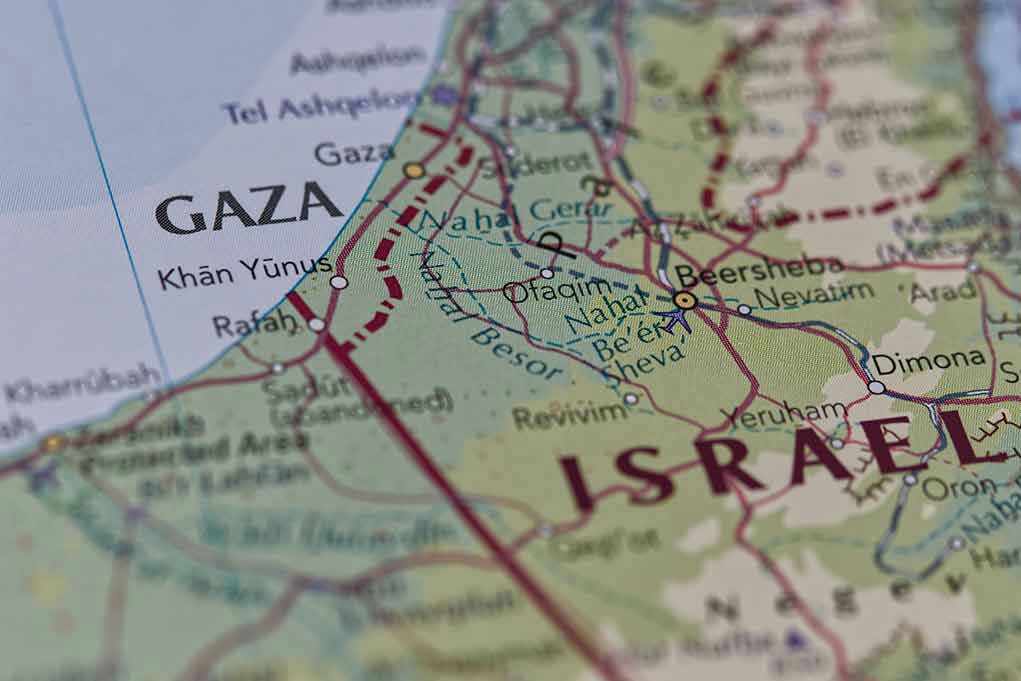
A sweeping new Israeli military campaign signals the largest Gaza occupation effort in decades, raising urgent questions about civilian safety and regional stability.
Story Snapshot
- The IDF has mobilized 60,000 reservists for a six-month occupation of Gaza City, marking the largest deployment since the 2023-2024 conflict.
- Operation “Gideon’s Chariots II” targets Hamas’s last urban stronghold with the explicit goal of eliminating its operational capacity.
- Heavy bombardments have caused mass civilian displacement, widespread infrastructure destruction, and an escalating humanitarian crisis.
- International organizations warn of systematic destruction and call for urgent humanitarian access as Israeli forces advance.
Unprecedented Military Mobilization for Gaza City Assault
On August 20, 2025, the Israel Defense Forces (IDF) launched the first phase of a massive assault on Gaza City, accompanied by the official call-up of roughly 60,000 reservists. This mobilization, the largest since the outbreak of the 2023-2024 Gaza conflict, reflects a decisive shift in Israeli strategy. Military leaders have outlined plans for a six-month campaign, codenamed “Gideon’s Chariots II,” with the explicit intent to seize and control the entirety of Gaza City—Hamas’s final urban bastion. Defense Minister Israel Katz authorized the operation, framing it as essential for national security and the complete dismantling of Hamas’s military capabilities.
This operation represents a departure from previous Israeli offensives, which typically focused on targeted raids or limited incursions rather than full-scale occupation. The offensive began with a concentrated assault on the Zeitoun neighborhood in southeastern Gaza City and rapidly escalated, resulting in dozens of strikes on residential buildings and civilian shelters. The IDF faces entrenched resistance from Hamas fighters employing urban guerrilla tactics, complicating the military’s push and increasing the risks of collateral damage in the densely populated city.
Humanitarian Crisis Intensifies Amid Urban Warfare
The consequences for Gaza’s civilian population have been severe and immediate. United Nations and humanitarian agencies report systematic destruction of homes, schools, and hospitals, with mass displacement pushing families into overcrowded shelters or forcing them to flee with nowhere safe to turn. In just twelve days, fifty-four strikes on civilian infrastructure were recorded, while food insecurity and lack of clean water have reached critical levels. Humanitarian leaders warn that the ongoing blockade and bombardment threaten to spiral into a full-scale catastrophe unless safe corridors and aid access are established without delay.
The international community remains deeply divided. Israeli officials insist the operation is necessary to neutralize ongoing threats from Hamas and restore security for Israeli citizens. However, UN human rights offices have condemned the scale and intensity of the campaign, describing it as “systematic destruction” and warning of violations of international law. This scrutiny places additional pressure on Israel’s leadership, who must balance military objectives with mounting diplomatic and humanitarian concerns.
Strategic Stakes and Broader Regional Implications
The long-term implications of this operation reach far beyond immediate military gains. Should Israel succeed in occupying Gaza City, it would mark a dramatic alteration of the region’s political and security landscape. The potential weakening of Hamas’s operational capacity is counterbalanced by the risk of prolonged insurgency, deepening animosity, and further instability both within Gaza and across the Middle East. The destruction of Gaza’s urban economy and infrastructure, combined with large-scale displacement, is likely to generate social fragmentation and trauma for years to come.
IDF Calls Up 60,000 Reservists for 6-Month Assault on Gaza City https://t.co/oMyYoM3mEW
— Howard Rothenburg (@hrothenb) August 21, 2025
For Americans who value national sovereignty, the rule of law, and genuine security, this conflict highlights the dangers of unchecked aggression and the humanitarian toll that prolonged military campaigns can exact on civilian populations. As the situation evolves, it remains critical to monitor both the strategic outcomes and the moral responsibilities at stake, ensuring that constitutional values and humanitarian principles are not undermined by the fog of war.
Sources:
Israel calls up thousands of reservists for invasion, occupation of Gaza City
UN News: Gaza City assault triggers humanitarian catastrophe
Israeli army launches new stage of offensive to occupy Gaza City















